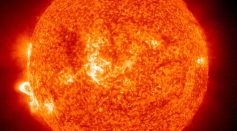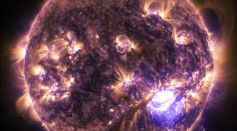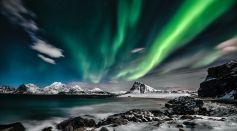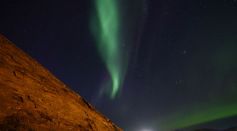Tags: Coronal mass ejection

Huge, Earth-Sized Sunspot Captured by Inouye Solar Telescope in Showing Sun’s Activity [LOOK]

NASA Captures Moderately Strong Solar Flare in the Northeastern Part of the Sun Spotted Friday [Watch Footage]

Are Solar Storms Dangerous? Theories Trigger Fears It May End Humanity

Biggest Geomagnetic Storm Hit Earth 150 Years Ago: What Have We Learned? And Are We Ready for the Next One?

Solar Flare Preparation: What You Should Do in Case It Hits Earth, Ignites a Geomagnetic Storm?
Solar Storm Warning: NASA Prepares For Swirling Debris That May Hit Earth This Week and Cause Mild Disturbance
Geomagnetic Storms and Intense Aurora: Do Solar Storms Cause Northern Lights?

NOAA: G2 Level Geomagnetic Storm and Aurora Borealis Predicted to Head South
Solar Flare Effects: What Is the Impact of Geomagnetic Storms on Earth's Field?
Solar Storms Mystery Finally Solved: Simulation Model to Predict Space Weather, Geomagnetic Storms Developed
Coronal Mass Ejection Caught on NASA Video Dispersing Billions of Hypersonic Particles, Watch Now!
Rosetta Eruption: New Hints Revealed About Solar Explosions
Solar Wind, Space Weather Poses Threats to Technology? Experts Study Direction of Winds on Sun's Surface
Coronal Mass Ejection Sends Solar Storm to Earth's Atmosphere, Astronomers Reveal
The Sun’s Rain is Shining Light on Solar Mysteries
Interesting Particles Look Like Snow In Space
Most Popular

The Science Behind Everyday Technology: Inventions That Changed How We Live

How the James Webb Space Telescope is Revolutionizing Space Discoveries and Shaping Astronomy News

Memory Science Uncovered: How the Brain Works to Form Memories and Why We Forget — Neuroscience Explained

Revolutionizing Climate Change Solutions: The Power of Carbon Capture Technology and Carbon Sequestration





